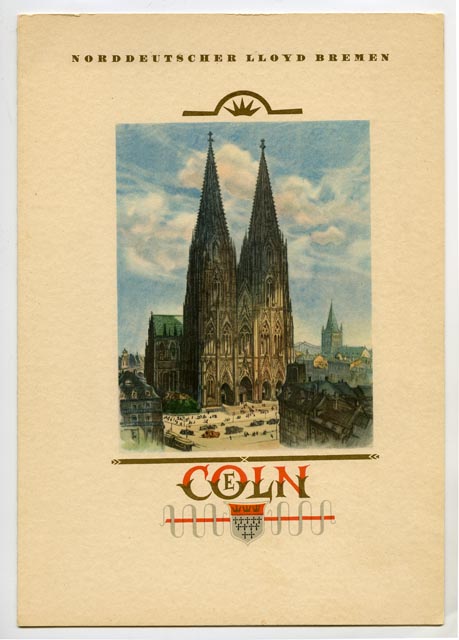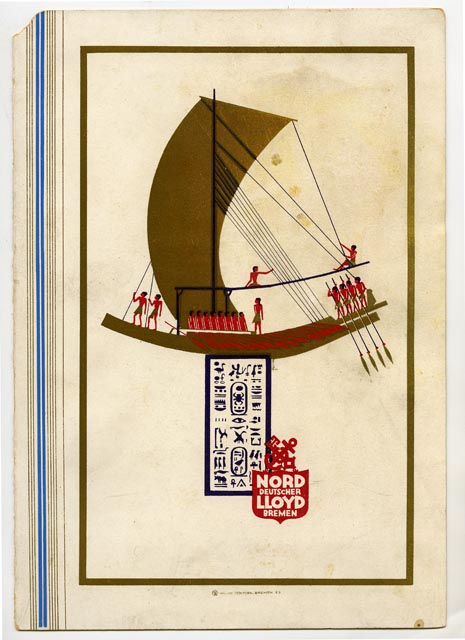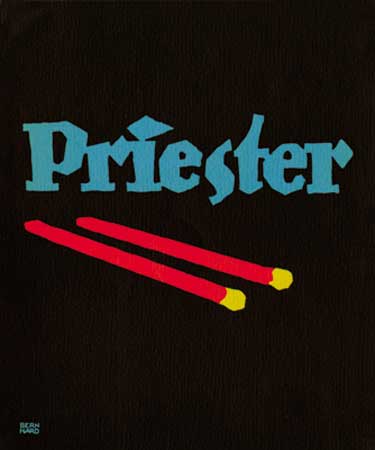We usually think of menus in purely functional terms, right? It is a sort of small booklet one gets in a restaurant that lists the possible foods we could order. Ocean liner menus, however, strive to be more than just functional; they are part of a whole vacation experience and therefore play more than just a purely functional role on a cruise. These menus must enhance the guests’ experiences on the voyage and impress them (as presumably the rest of the cruise does). Ocean liner menus are, in effect, part of the “whole package.” Because of this, ocean liner menus, especially older ones, were decorated, aesthetically pleasing pieces of art, as well as menus. The menus in the Beazley Collection exemplify this idea with their often colorful designs:

This menu cover, for example, from the ocean liner Bremen (1929-1939), is like a work of art unto itself. Can these menus then function as more than just utilitarian objects that showcase food? Yes, they can and did. The menu covers often offered the viewer valuable insight into a society’s cultural or aesthetic values.

Consider, for example, this menu from the Columbus, from a German-based cruise ship company:

The art on this cover is reminiscent of German art of the time (mid-20th century) called Plakatstil (or “Poster Style). This style of art emerged in Germany in the early 20th century and was mainly used for advertising. The below poster designed by Lucian Bernhard in 1905 for Priester matches is a classic example.
Using flat, bold colors and easy to read fonts, Plakatstil was a reaction to the preceding Art Nouveau style, which had favored complex decorative designs. The simplicity of Plakatstil posters meant that they were easy for the customer to read and understand. Soon, however, posters in this style were being created not only for advertising but as individual art pieces as well. This menu cover is a perfect example of this. Utilizing the classical tenants of the Plakatstil style (simplified shapes and objects, a simple central image, eye-catching colors), this menu transcends its utilitarian purpose and becomes, arguably, a piece of art. In this way, ocean liner menus in the Beazley Collection (and beyond) do more than just teach us about what people ate on their trips; they educate us about the arts of different cultures and times as well.